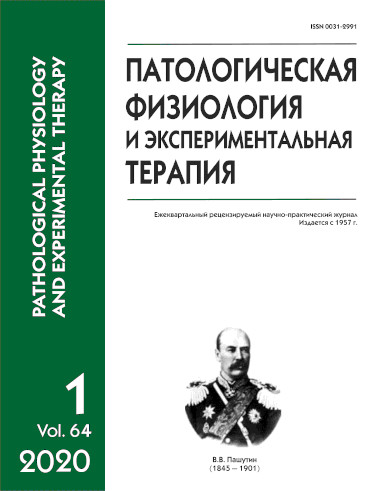Pathophysiological mechanisms of epithelial-mesenchymal transition in idiopathic epiretinal fibrosis
Abstract
Epithelial-mesenchymal transition may underlie reorganization of mature differentiated cells and tissues during their repair and fibrosis. The pathogenesis of idiopathic epiretinal fibrosis may also involve processes of differentiation and transformation of different cell types. Aim. To identify signs of the mesenchymal phenotype in cells of idiopathic epiretinal membranes removed from the surface of the retina in patients with different visual acuity. Methods. Sixty eyes of 60 patients with idiopathic epiretinal fibrosis were divided into three groups: Group 1 included patients with best-corrected visual acuity (BCVA) 0.7‒0.9; group 2 consisted of patients with BCVA 0.3‒0.6; and group 3 consisted of patients with BCVA 0.1‒0.3. In all patients, the internal limiting membrane (ILM) was peeled for idiopathic epiretinal membrane (IERM). Idiopathic ERM/ILM samples from vitrectomy were analyzed for vimentin, α-smooth muscle actin (α-SMA), and type IV and VI collagens using flat-mount immunohistochemistry. Results. In patients of group 1, single cells expressing vimentin, α-SMA, and type VI and VI collagens were found. In patients of group 2, the number of cells expressing α-SMA and vimentin was increased with a statistically significant increase in the expression of type IV and VI collagens (p <0.05). Type VI and IV collagens prevailed (p <0.05) in all samples of group 3. Sometimes membranes had sites of rough fusion with extracellular matrix components. These membranes strongly adhered to ILM and were removed as a single block during vitrectomy. Conclusion. Using the example of progressive idiopathic epiretinal fibrosis this study found the epithelial-mesenchymal transition. This phenomenon was characterized by membrane cells that have acquired the mesenchymal phenotype due to appearance of vimentin and α-SM actin expression (p <0.05) as well as the ability to produce components of extracellular matrix (type IV and VI collagens) (p <0.05). The key point in the process of ERM formation and progression was the transformation of the cellular composition into myofibroblast-like cells. The increased expression of α-SM actin was associated with membrane contraction and tensioning of the retina by myofibroblasts, which resulted in impaired visual acuity and increased metamorphopsia (r <-0.9, p <0.001).






